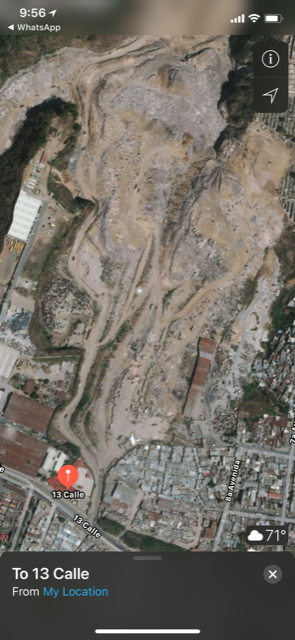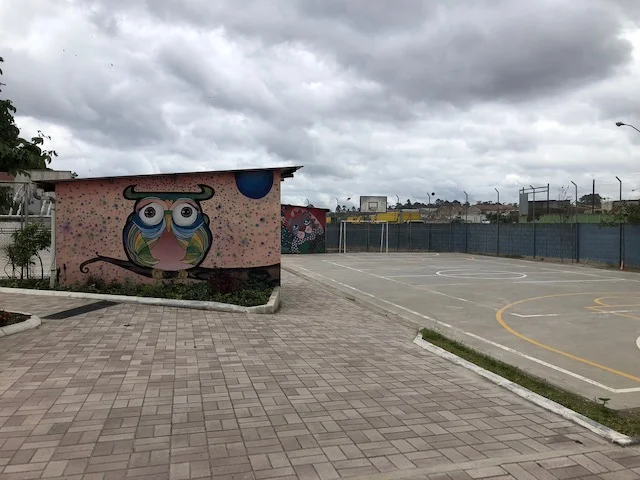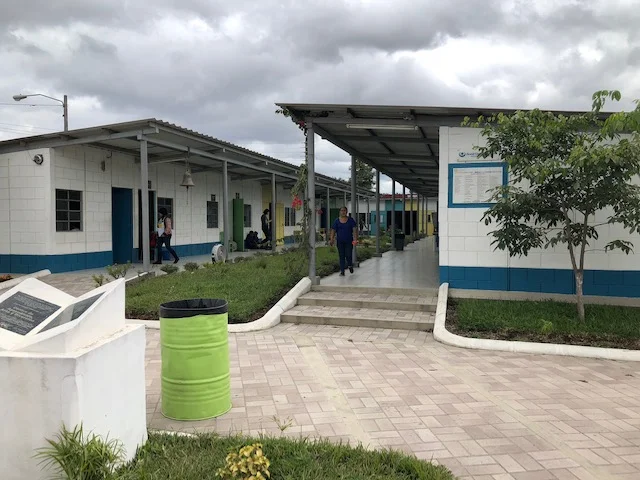The Guajeros
While we were volunteering to work on a coffee farm (at 2000m on Volcan de Agua) with a fabulous nonprofit De La Gente (more coming in separate post) in Antigua, Guatemala, we would always know we were close to to town when the mountain trail we were descending started to be lined with trash. In talking about the importance of waste-management awareness, practices, and regulations, one of our leaders mentioned the Basurero (garbage dump) in Guatemala City. Knowing that our family theme for our destination, Nicaragua (which was cancelled due to political unrest and violence), had been waste-management and recycling, I listened intently.
That night, I did my research and watched a 36-minute documentary on YouTube called “A Recycled Life” on my iPhone, and my heart ached. I knew that we simply had to understand the work that was happening in Basurero Zona 3-–the largest garbage dump in Guatemala.
The term “Guajero” is literally used to define a “profession” of garbage picking at the dump. For the last several decades, hundreds and thousands of people lived and worked in the garbage dump as a means for survival. The Guajeros rummage through the toxic dump to find things to sell, food to eat, items to reuse, and in many cases, chemicals to sniff. Many live in the dump and on reclaimed landfill where they have squatted and built make-shift homes with the treasures they have collected. Despite the dangers of collapsible garbage piles, toxic materials, truck accidents, and unsafe behavior/habits, the Guajeros are proud of making an honest living from the dump (usually about $7.00 per day); and their laborious recycling efforts reduce Guatemala’s trash by approximately one-million pounds per day.
The video highlights that in 2005 there was a massive methane fire and the Central Guatemalan Government was forced to act. They made some adjustments and created an identification system for access to the dump, and banned children under the age of 16 and pregnant women from entering. They also created “hours of operations” and closed the dump outside of those hours. Still, due to holes in the fences, many children still enter, and both adults and children find ways to hide in the dump after hours to continue working. Today, the Basurero is located in Zona Tres which is one of the most dangerous and impoverished places in Guatemala. The Basurero itself is run by a Mafia who charge the Guajeros premiums for rummaging access to certain higher-end trucks (food markets, high-end hotels, etc.).
As with all social justice issues, the problem is not binary, and therefore the solution is not simple. To remove the Guajeros would be to displace thousands of unskilled workers who have no other means of survival; not to mention that it would result in more trash and less recycled goods for the country. Yet, to ignore the issue, perpetuates generations of poverty and oppression.
I researched nonprofits in the area that were addressing this issue and found a few great organizations that focused on the key to balancing opportunity (true for all cultures)—education. The two that caught my attention were Safe Passage focusing on providing after school support, and recently, charter school education to Guajero children; and Creamos, focusing on educating women and equipping them with skills they need to find alternate employment.
Kapil and I planned a learning experience centered around the Basurero while in Guatemala City for a night before our flight out of the country. The kids were told that we were going to watch the video as a family and then visit one of the nonprofit organizations addressing the issue the next day. It was a heavy night. The kids definitely gained an appreciation for their lives and upbringing after watching the video and were nervous to go to the dump.
We visited Safe Passage’s school site right next to the dump, which hosts Creamos. We told the kids not to plug their noses, and to treat the site as we would a home, as this is the home of the Guajeros—and it deserves to be respected. As soon as we exited the car, I realized I had given them a very tall order. The stench was strong and rancid, but the kids didn’t even comment on the smell until we got back in the car.
As Creamos’ Director of Programs, Felix, welcomed us and gave us an overview, bits of trash flew over the campus and dust/trash particles rode the higher winds. Alongside the trash dump, where the vultures circled, Guajeros worked, government officials “beautified” the outside approach to the dump, and kids were kids—they played basketball, joked, and studied.
Felix told us all about the amazing progress that Creamos had made with women enrolled in employment skills training, life-skill courses, and academic education—over the past 10 years. He showed us sewing rooms where women were fulfilling orders for canvas bags, and their walls of art depicting the positive and negative consequences of lifestyle choices. He talked about the hopes and dreams that the 500+ women held as they graduated from from primary school and were exposed to different ideas for their life. It was inspiring and humbling.
Finally, Felix took us to my favorite room—the shop! There, were the most beautiful jewelry and bags made from paper and recycled material. Every item was marked with a code of the woman artist so that she would get to collect the earnings of her sale. Everyone bought something, and I definitely did my part (and made sure to vary the artists). We left Creamos (which means “We believe” in Spanish), knowing that they CAN and WILL slowly uplift this community.
Here comes our call to action. If anything in this post (or our trip) inspires you, we would really LOVE for you to do any/all of these things:
- Donate to Creamos
- Shop! The greatest affirmation that they can do it is to see that there is value in their new line of work. Get someone special an early Christmas present and spread awareness.
- Watch “A Recycled Life” and talk to your kids about their privilege and brainstorm ways that they can reduce their trash footprint
- Commit to visiting the dump(s) and supporting organizations when you vacation in Central America...awareness matters and a nation’s community/culture, is more than volcanoes, animals, and resorts.
- Share this blog post with your friends!
Guatemala was only our second country (likely out of 32) on our global journey. We will continue to look for ways to learn and contribute with cultural humility...so we can’t promise you that this will be the last opportunity for action...indeed, we hope it is not.
Aerial view of the landfill/Basurero Zona 3 (large dirt area) and the pin is Creamos.
Adult student art depicting the natural consequences of positive and negative choices.
Beautiful paper beaded jewelry...I'll be rocking in mine on Instagram!









